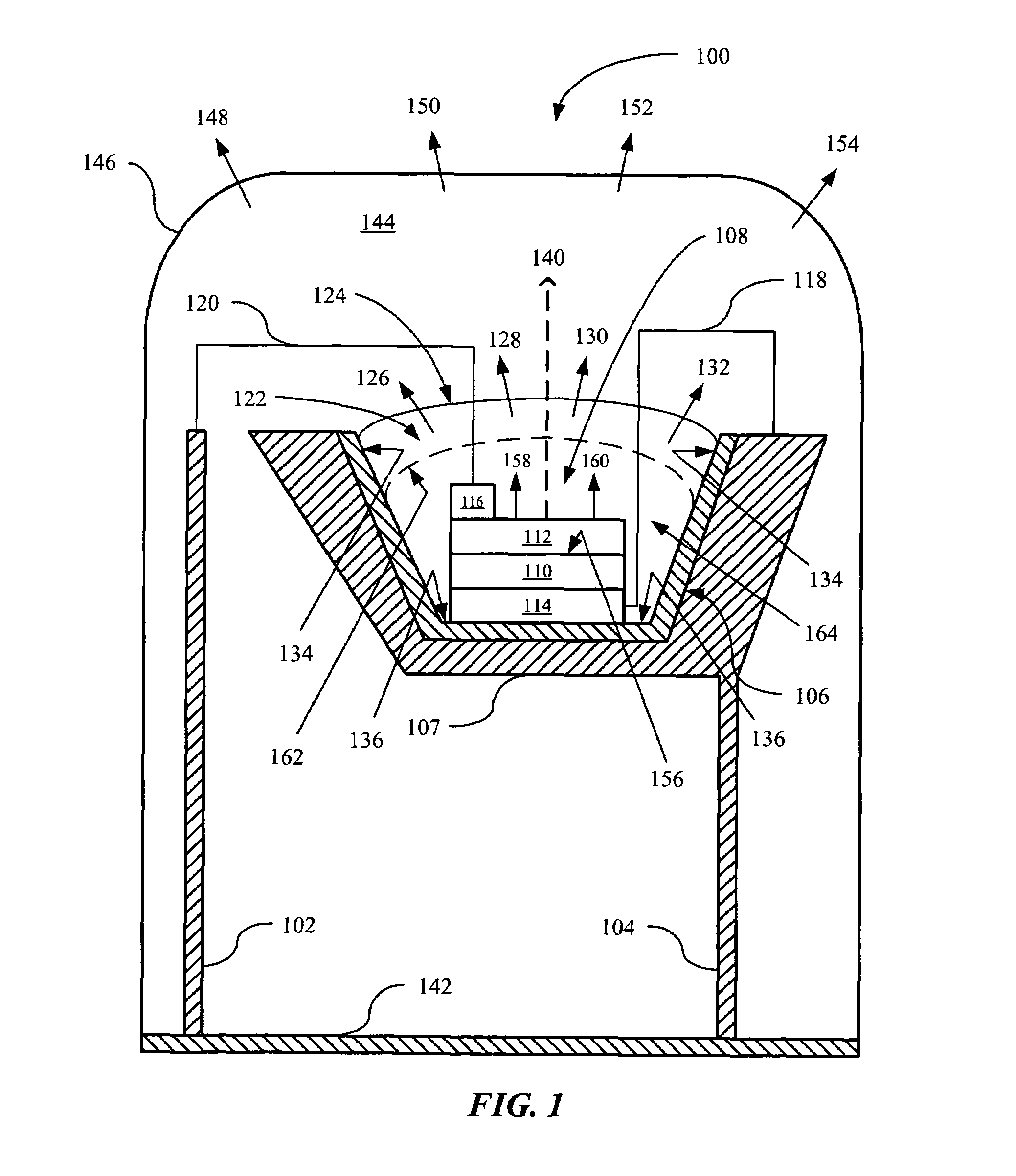Phosphor-converted LED devices having improved light distribution uniformity
a technology of led devices and phosphors, which is applied in the direction of semiconductor devices, semiconductor/solid-state device details, electrical devices, etc., can solve the problems of unwanted wide white color bin spread, phosphor migration is partially impeded, and parts of the sinking phosphor that clear the outer edges of the top surface of the led may further sink below that surfa
- Summary
- Abstract
- Description
- Claims
- Application Information
AI Technical Summary
Problems solved by technology
Method used
Image
Examples
Embodiment Construction
[0020]In the following description of various implementations, reference is made to the accompanying drawings that form a part of this disclosure, and which show, by way of illustration, specific implementations in which the invention may be practiced. Other implementations may be utilized and structural changes may be made without departing from the scope of the present invention.
[0021]In FIG. 1, a cross-sectional view of an example of an implementation of a new phosphor-converted LED device (“NPCLD”) 100 is shown in accordance with the invention. The NPCLD 100 includes an anode 102 and a cathode 104. The cathode 104 includes a concave (i.e., bowl and / or cup-shaped) base housing 106 formed of an electrical insulator and supported on a frame 107, in which an LED 108 is placed. The frame 107 may be integrated with the cathode 104, and may be fabricated, for example, from lead. It will be understood by those skilled in the art that the frame 107 may alternatively be any form of printe...
PUM
 Login to View More
Login to View More Abstract
Description
Claims
Application Information
 Login to View More
Login to View More - R&D
- Intellectual Property
- Life Sciences
- Materials
- Tech Scout
- Unparalleled Data Quality
- Higher Quality Content
- 60% Fewer Hallucinations
Browse by: Latest US Patents, China's latest patents, Technical Efficacy Thesaurus, Application Domain, Technology Topic, Popular Technical Reports.
© 2025 PatSnap. All rights reserved.Legal|Privacy policy|Modern Slavery Act Transparency Statement|Sitemap|About US| Contact US: help@patsnap.com



